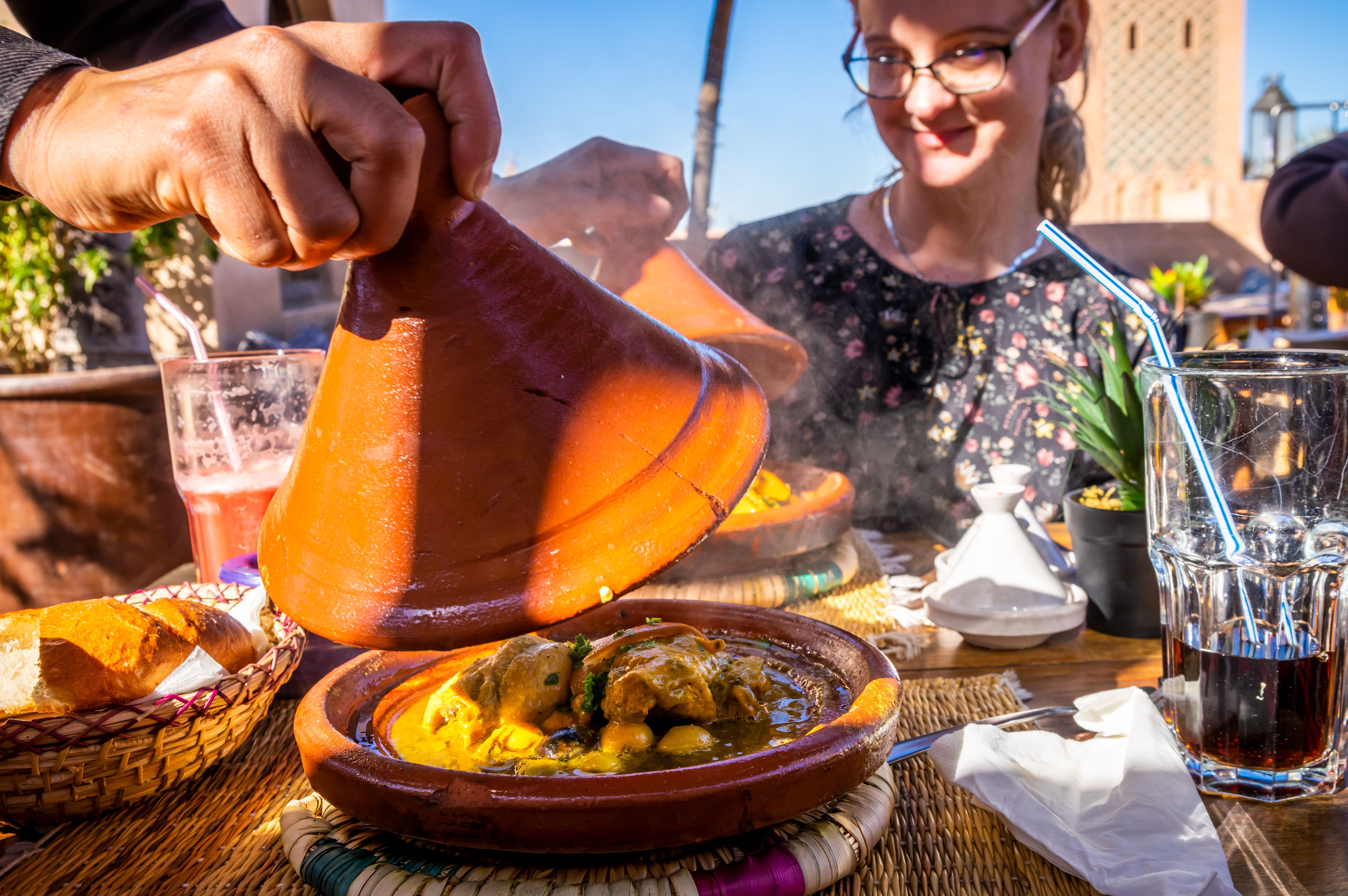Exploring the Rich Flavors of Moroccan Tagine
Discovering the Essence of Moroccan Tagine
Moroccan tagine is more than just a dish; it's a culinary journey that transports you to the aromatic streets of Marrakech and the vibrant souks of Fez. This North African delight has captivated food enthusiasts across the globe with its rich flavors and enthralling history. Whether you're a seasoned cook or a curious foodie, delving into the world of Moroccan tagine promises an enriching experience.

The Origins of Tagine
The tagine takes its name from the traditional earthenware pot in which it is cooked. This unique cooking vessel, with its distinct conical lid, is designed to trap steam and return condensed liquid to the dish, ensuring tender and flavorful results. Historically, tagines were slow-cooked over open fires, allowing spices and ingredients to meld beautifully.
Moroccan tagine is heavily influenced by the country's diverse cultural heritage. Berber, Arab, and Andalusian flavors come together to create a dish that's both comforting and exotic. The use of local ingredients like olives, preserved lemons, and a medley of spices such as cumin, saffron, and cinnamon make each tagine uniquely Moroccan.
Essential Ingredients
Creating an authentic Moroccan tagine starts with sourcing fresh, quality ingredients. The primary protein can range from succulent lamb and chicken to fish or vegetarian options. An array of vegetables adds color and texture, while spices are the heart of any tagine.
- Preserved Lemons: These add a tangy depth to the dish.
- Olives: Green or black olives provide a briny kick.
- Spices: A blend known as Ras el Hanout often includes cardamom, clove, cinnamon, ground chili peppers, coriander, cumin, paprika, mace, nutmeg, peppercorn, and turmeric.

Cooking Techniques
Cooking a tagine may seem daunting at first, but it’s surprisingly straightforward. Begin by sautéing onions and garlic in olive oil at the base of the tagine pot. Layer your chosen protein and vegetables over this aromatic base. Sprinkle with spices and add a touch of water or broth for moisture.
The key to a perfect tagine is patience. Allow the dish to simmer gently for an hour or more. This slow cooking process lets the flavors develop fully, resulting in a meal that’s moist and deeply flavorful. For those without a traditional tagine pot, a heavy-bottomed Dutch oven works as an excellent alternative.
Serving and Enjoyment
A Moroccan tagine is traditionally served with couscous or warm bread. The soft grains of couscous are ideal for soaking up the rich sauce, while bread offers a delightful way to scoop up every morsel. Garnish with fresh herbs like cilantro or parsley for a burst of color and freshness.

Enjoying a tagine is often a communal affair, bringing people together over a shared love of good food. The warmth and depth of flavors make it a perfect dish for gatherings and celebrations. A well-prepared tagine not only satisfies hunger but also offers a taste of Morocco's rich culinary history.
Whether you're exploring Moroccan cuisine for the first time or revisiting it with fond memories, the tagine represents a world of flavors waiting to be discovered. Its balance of spices and textures makes it an unforgettable dish that lingers on the palate long after the last bite.
